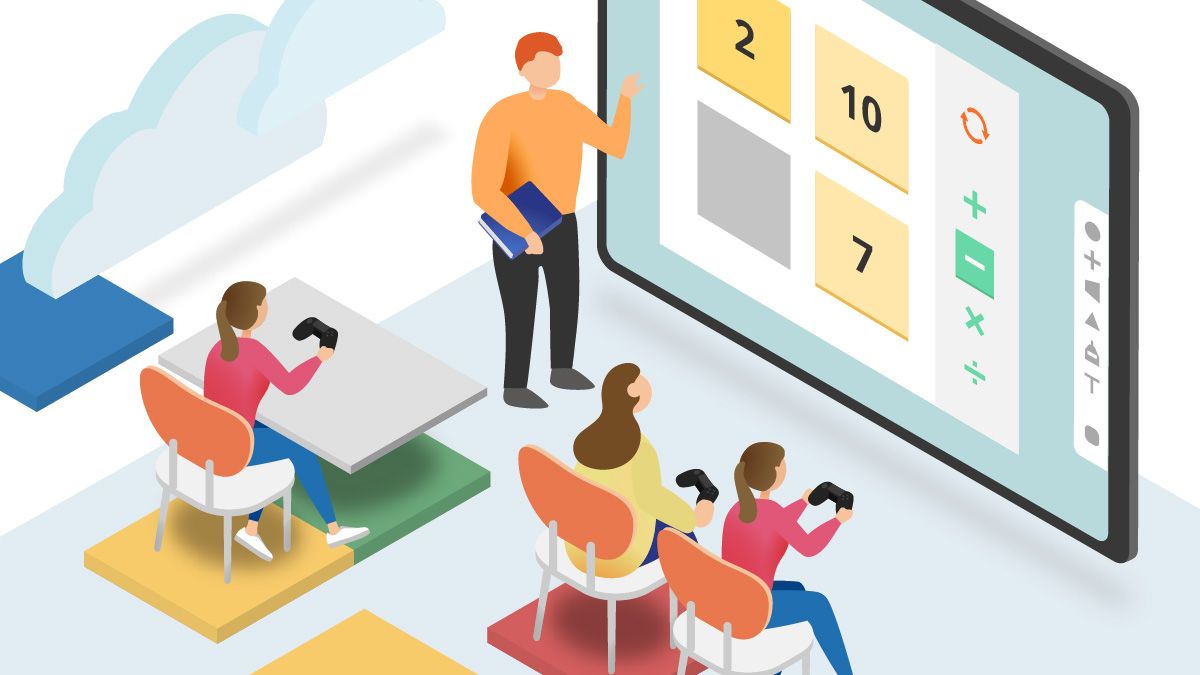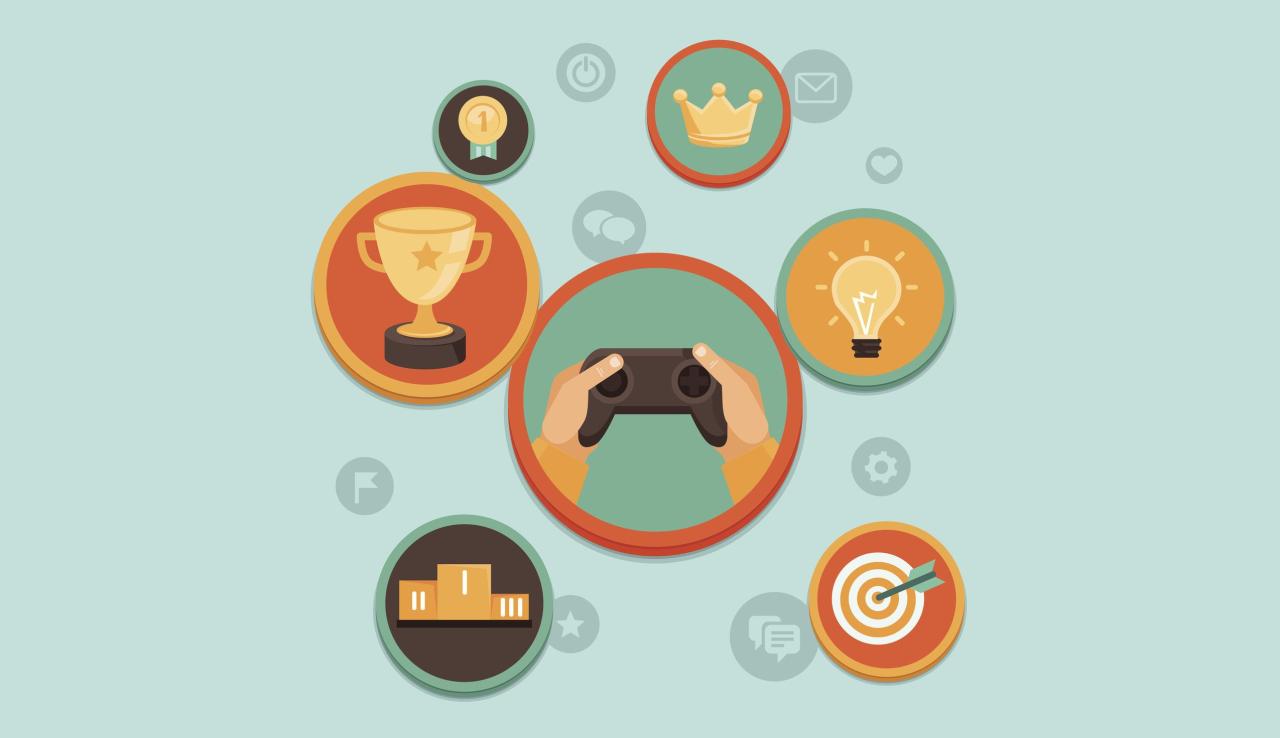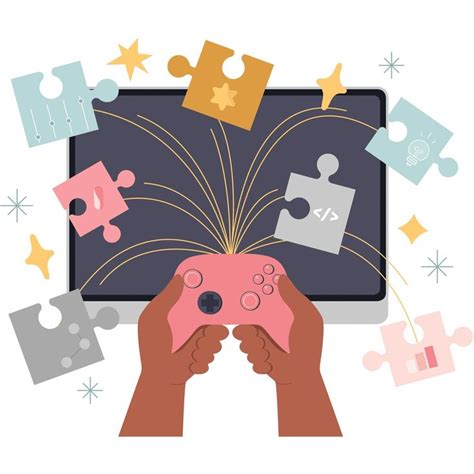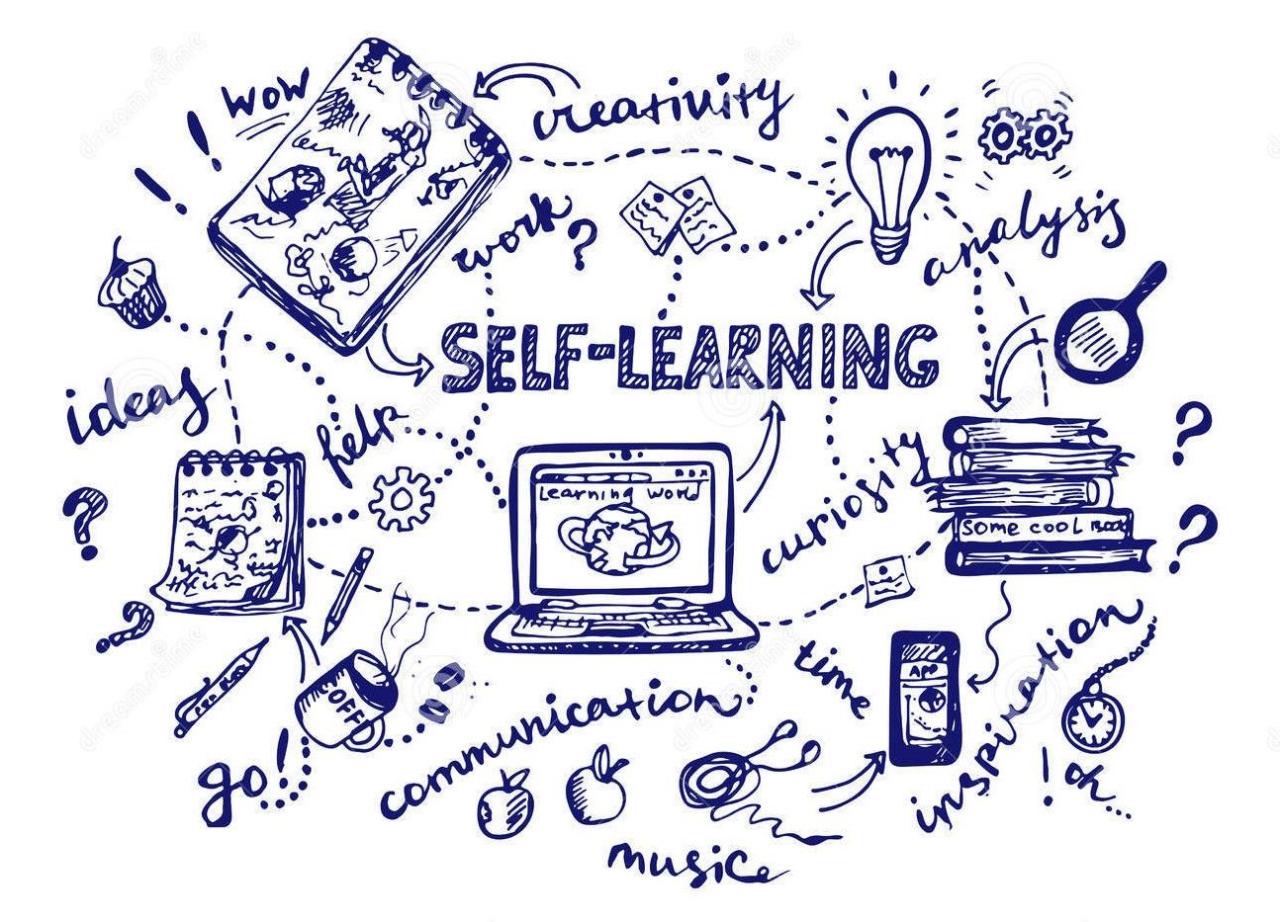
Gamified Learning Boosts Student Engagement
In today’s fast-paced digital world, capturing and sustaining the attention of learners, especially students, presents an ever-growing challenge. Traditional educational methods, often characterized by rote memorization and passive listening, frequently fall short in fostering genuine interest and deep understanding. This is precisely where gamified learning emerges as a revolutionary paradigm shift. More than just playing games in the classroom, gamification is the strategic integration of game-like elements, mechanics, and principles into non-game contexts, specifically designed to ignite motivation, drive participation, and enhance the overall learning experience. For educators, institutions, and EdTech companies, embracing this innovative approach isn’t merely about keeping up with trends; it’s about unlocking unprecedented levels of student engagement, improving knowledge retention, and fostering crucial 21st-century skills. This makes “gamified learning” a highly sought-after topic, ripe for content that can attract significant organic traffic and generate high Google AdSense revenue by providing valuable insights into transforming education. This comprehensive article will delve into the core concepts of gamified learning, dissect its powerful mechanisms, explore its diverse applications across educational levels, and illuminate the profound benefits it offers in creating dynamic, effective, and truly captivating learning environments.
Gamified Learning: Beyond Mere Play
At its essence, gamified learning leverages the inherent human psychological drivers that make games so compelling. It’s about tapping into our natural desire for achievement, competition, collaboration, immediate feedback, and a sense of progression. Unlike simply using educational games (which are often stand-alone, complete games designed for learning), gamification takes the underlying principles of games and applies them to existing curriculum or learning activities. This transforms routine tasks into engaging challenges, turning learning into an active, rewarding pursuit.
Key components and characteristics that define effective gamified learning include:
- Points: Awarded for completing tasks, mastering concepts, or demonstrating effort. These provide immediate feedback and quantifiable progress.
- Badges: Digital accolades earned for specific achievements, milestones, or skill acquisition. Badges act as visible symbols of accomplishment.
- Leaderboards: Ranking systems that display individual or team progress, fostering healthy competition and a sense of belonging.
- Levels/Progression: Structuring learning into distinct stages that students “level up” through, indicating mastery and providing a clear path forward.
- Quests/Challenges: Framing learning objectives as missions or challenges with clear goals and rewards, making tasks feel purposeful.
- Narrative/Storytelling: Weaving a compelling story around the learning content, providing context and emotional investment.
- Immediate Feedback: Providing instant information on performance, allowing students to understand mistakes and adjust their approach quickly.
- Avatars/Personalization: Allowing students to create personalized representations of themselves, fostering ownership and identity within the learning environment.
- Rewards/Incentives: Tangible or intangible benefits for achievement, encouraging continued effort.
- Freedom to Fail (and Retry): Creating a low-stakes environment where mistakes are seen as learning opportunities, encouraging experimentation without fear of punitive consequences.
The genius of gamification lies in its ability to shift a learner’s mindset from obligation to voluntary engagement, making the process of acquiring knowledge inherently rewarding.
The Psychological Powerhouse: How Gamification Works
The effectiveness of gamified learning isn’t random; it’s deeply rooted in established psychological theories and human behavioral patterns. By understanding these underlying mechanisms, educators can design truly impactful gamified experiences.
A. Intrinsic Motivation and Self-Determination Theory
Gamification primarily targets intrinsic motivation, the drive to engage in an activity for its inherent satisfaction rather than for external rewards. It aligns perfectly with Self-Determination Theory, which posits that humans have three fundamental psychological needs:
- Autonomy: The need to feel in control of one’s choices and actions. Gamification offers choices in learning paths, quest selection, or problem-solving approaches.
- Competence: The need to feel capable and effective in mastering challenges. Points, badges, and leveling systems provide clear indicators of increasing competence.
- Relatedness: The need to feel connected to others. Leaderboards, team-based challenges, and collaborative quests foster a sense of community and shared purpose.
When these needs are met, learners are more likely to be deeply engaged, persistent, and genuinely enjoy the learning process.
B. Operant Conditioning and Feedback Loops
While intrinsic motivation is key, gamification also skillfully employs principles of operant conditioning, where behaviors are modified by their consequences, primarily through positive reinforcement.
- Immediate Feedback: Games excel at providing instant feedback. In learning, this means students immediately know if their answer is correct, if their strategy worked, or what they need to improve. This reinforces correct behaviors and allows for quick course correction.
- Variable-Ratio Reinforcement: Much like slot machines, many game mechanics utilize variable-ratio reinforcement (rewards are unpredictable but frequent over time), which is incredibly powerful at sustaining engagement and encouraging repeated attempts. This can be seen in unpredictable “loot drops” for mastering a concept or surprise bonus points.
- Progress Tracking: Visual progress bars, experience points (XP), and level indicators provide clear evidence of advancement, making the effort feel worthwhile and encouraging continued investment.
C. Flow State Theory
The concept of a “flow state,” popularized by Mihaly Csikszentmihalyi, describes a state of complete absorption in an activity, characterized by intense focus, enjoyment, and a loss of self-consciousness. Games are masters at inducing flow. Gamified learning aims to replicate this by:
- Clear Goals: Providing unambiguous objectives for each task or challenge.
- Immediate Feedback: Constantly informing the learner of their performance.
- Balance of Challenge and Skill: Designing tasks that are neither too easy (leading to boredom) nor too difficult (leading to frustration), but just challenging enough to require focused effort and push the learner’s skills.
- Defined Rules: Creating a clear structure within which the learning occurs.
Achieving a flow state in learning means students are deeply immersed, highly motivated, and often unaware of time passing, leading to optimal learning outcomes.
D. Social Learning Theory and Collaboration
Humans are social creatures, and learning often thrives in social contexts. Gamification harnesses this by:
- Team-Based Challenges: Encouraging students to work together to achieve common goals, fostering communication and shared responsibility.
- Competitive Elements: Leaderboards can create friendly competition, motivating students to improve their individual performance while observing their peers.
- Peer Recognition: Badges or public acknowledgments for contributions can come from peers, reinforcing positive behaviors.
- Community Building: Creating a sense of shared purpose and identity within a “game world” or learning platform.
This social dimension can transform a solitary learning experience into a dynamic, interactive group endeavor.
Key Elements and Mechanics in Detail
To effectively implement gamified learning, it’s crucial to understand the practical application of its various elements and mechanics.
A. Points, Experience Points (XP), and Virtual Currency
These are the most fundamental building blocks of gamification, providing quantifiable feedback and a sense of progression.
- Purpose: Serve as a basic measure of effort and achievement. XP specifically denotes progress towards a new level or skill mastery. Virtual currency (e.g., “knowledge coins”) can be exchanged for in-game rewards.
- Application: Award points for completing homework, participating in discussions, answering questions correctly, helping peers, or mastering a new concept. XP accumulation leads to leveling up. Virtual currency can be used to “buy” hints, unlock advanced lessons, customize avatars, or access bonus content.
- Impact: Provides instant gratification, motivates continued engagement, and allows for differentiated reward systems.
B. Badges and Achievements
Badges are visual representations of earned accomplishments, serving as powerful motivators and recognition tools.
- Purpose: To acknowledge specific achievements, demonstrate mastery of skills, or celebrate participation. They provide social recognition and a sense of pride.
- Application: Design badges for completing specific modules (e.g., “Algebra Master”), demonstrating soft skills (e.g., “Collaboration Champ”), perfect attendance (“Punctuality Pro”), or reaching milestones (e.g., “100-Question Whiz”).
- Impact: Boosts self-esteem, creates a sense of accomplishment, and encourages exploration of different learning areas to “collect them all.”
C. Leaderboards and Rankings
Leaderboards introduce a competitive element, appealing to the human desire to compare and strive for top positions.
- Purpose: To display the ranking of individuals or teams based on accumulated points, achievements, or performance metrics.
- Application: Rank students by points earned in a unit, number of badges acquired, or success rate on quizzes. Can be individual, by group, or even by class vs. class.
- Impact: Fosters healthy competition, encourages extra effort, and provides a clear benchmark for self-improvement. Crucially, leaderboards should be designed carefully to avoid demotivating lower-ranked students; focus on progress, not just top spots.
D. Levels and Progression Paths
Structuring learning into levels provides a clear sense of advancement and mastery.
- Purpose: To define clear stages of learning and to show learners their progress from novice to expert.
- Application: Each module or chapter can be a “level.” Completing all tasks in a level unlocks the next, possibly with new challenges or content. “Boss battles” (comprehensive tests) can mark the end of a major level.
- Impact: Breaks down complex learning into manageable chunks, provides a sense of achievement with each level completion, and offers a visible pathway for growth.
E. Quests, Missions, and Challenges
Framing learning objectives as quests or missions adds narrative and purpose.
- Purpose: To give context and a sense of adventure to learning tasks, making them feel less like chores and more like purposeful endeavors.
- Application: “Embark on a historical quest to discover the causes of World War II,” “Solve the mystery of the missing variable in this algebra challenge,” or “Complete the science mission to build a working circuit.”
- Impact: Enhances engagement by adding a narrative layer, promotes problem-solving, and encourages critical thinking as students work towards a defined goal.
F. Avatars and Customization
Personalization creates a sense of ownership and identity within the learning environment.
- Purpose: To allow students to represent themselves visually within the game-like system, fostering a sense of identity and agency.
- Application: Students can choose or design an avatar that represents them. Virtual currency or earned points can be used to “buy” new clothes, accessories, or traits for their avatar.
- Impact: Increases immersion, makes the learning platform feel more personal, and adds a fun, creative outlet.
G. Immediate and Constructive Feedback
Feedback is the lifeblood of games, guiding players and preventing frustration.
- Purpose: To provide instant information on performance, allowing students to understand mistakes, reinforce correct answers, and adjust their strategies in real time.
- Application: Automated quizzes with instant answer validation, pop-up hints when a student struggles, or progress bars that update as tasks are completed. Crucially, feedback should be constructive, explaining why an answer was wrong, not just that it was wrong.
- Impact: Accelerates learning, reduces feelings of helplessness, and fosters a growth mindset where mistakes are seen as opportunities for improvement.
Diverse Applications of Gamified Learning

Gamified learning isn’t confined to a single subject or age group; its principles are remarkably versatile and can be applied across various educational contexts.
A. K-12 Education
In primary and secondary schools, gamification can revolutionize core subjects.
- Mathematics: Apps like Prodigy or built-in classroom gamification where students earn points for solving problems, unlock new levels for mastering concepts, and compete on leaderboards for accuracy.
- Science: Lab activities framed as “investigative missions,” virtual simulations where students earn badges for successful experiments, or team challenges to design sustainable solutions.
- Language Arts: Reading challenges with points per book, vocabulary quizzes unlocking new story chapters, or creative writing prompts as “narrative quests.”
- Social Studies/History: Creating historical timelines as progression paths, “exploring” ancient civilizations through interactive maps, or role-playing historical figures to earn “influence points.”
B. Higher Education
Universities and colleges are increasingly using gamification for complex subjects.
- Business Courses: Simulated business environments where students compete to manage a virtual company, make strategic decisions, and earn “market share points.”
- Computer Science: Coding challenges with immediate feedback, bug-fixing “bounties,” or collaborative projects where team points are awarded for efficient code.
- Healthcare/Medicine: Virtual patient simulations where students earn points for accurate diagnoses, badges for mastering procedures, or leaderboards for treatment efficacy.
- Online Courses (MOOCs): Many massive open online courses use badges, completion streaks, and peer review systems to boost engagement and completion rates.
C. Corporate Training and Professional Development
Gamification is highly effective in adult learning, particularly for skill acquisition and compliance training.
- Sales Training: Sales simulations where employees earn points for closing deals, climb leaderboards, and unlock “power-ups” (e.g., advanced sales techniques).
- Onboarding Programs: New employees “level up” as they complete HR forms, learn company policies, and meet key colleagues, earning badges for each milestone.
- Compliance Training: Interactive modules with quizzes, scenarios, and immediate feedback where employees earn points for correct choices and unlock “compliance certificates.”
- Software Adoption: Guided tutorials framed as quests, where users earn points for mastering new features or completing tasks within the software.
D. Health and Wellness Education
Promoting healthy habits through gamified approaches.
- Fitness Challenges: Apps that award points for steps taken, calories burned, or workout completion, with leaderboards for friends or groups.
- Nutrition Education: Tracking food intake for points, unlocking “healthy recipe” badges, or competing in “vegetable consumption challenges.”
- Mental Health Awareness: Apps or programs that reward daily mindfulness practice, journaling, or progress in therapy goals.
Benefits of Integrating Gamified Learning
The advantages of implementing gamified learning strategies are multi-faceted, impacting not only student performance but also their attitudes towards learning and overall well-being.
A. Enhanced Student Engagement and Motivation
This is the most direct and widely recognized benefit. Gamification transforms passive learning into an active, enjoyable pursuit.
- Increased Participation: Students are more likely to volunteer, complete assignments, and engage in discussions when there’s a game element involved.
- Sustained Effort: The promise of rewards and progression encourages students to persevere through challenging material.
- Reduced Apathy: Learning becomes less of a chore and more of an exciting challenge, combating boredom and disinterest.
- Personalized Learning: Many gamified systems allow students to progress at their own pace, engaging with content that matches their current skill level and interests.
B. Improved Knowledge Retention and Skill Development
The active, immersive nature of gamified learning leads to deeper understanding and better recall.
- Active Learning: Students are actively doing, solving, and participating, which is more effective than passive listening or reading.
- Repetitive Practice (Disguised): Repetition, crucial for mastery, becomes less monotonous when framed as replaying a level or attempting a challenge again for a higher score.
- Problem-Solving and Critical Thinking: Many gamified tasks require strategic thinking, analysis, and creative solutions.
- Real-time Application: Students apply concepts immediately in interactive scenarios, solidifying their understanding.
- Growth Mindset: The emphasis on leveling up and retrying encourages students to see challenges as opportunities for growth rather than insurmountable obstacles.
C. Fostering 21st-Century Skills
Beyond academic knowledge, gamification nurtures vital soft skills essential for success in modern life.
- Collaboration and Teamwork: Many gamified activities are designed for groups, requiring communication, negotiation, and shared problem-solving.
- Communication Skills: Discussing strategies, explaining concepts to teammates, or presenting solutions.
- Resilience and Perseverance: Learning to overcome obstacles, recover from failure, and keep trying until a goal is achieved.
- Adaptability: Adjusting strategies based on feedback and evolving challenges.
- Digital Literacy: Students become more comfortable and proficient with technology as they navigate gamified platforms.
- Self-Regulation: Managing their own progress, setting goals, and allocating time effectively.
D. Immediate and Personalized Feedback
As discussed, this is a cornerstone of effective gamification.
- Timely Corrections: Students don’t wait days for feedback, allowing them to correct misunderstandings immediately.
- Targeted Support: Systems can identify areas where a student is struggling and offer specific resources or hints.
- Celebration of Success: Instant recognition for achievements boosts confidence and reinforces learning.
E. Data-Driven Insights for Educators
Gamified platforms often generate rich data that can be invaluable for teachers and administrators.
- Performance Tracking: Detailed metrics on student progress, areas of difficulty, and time spent on tasks.
- Engagement Levels: Insights into which activities are most engaging and which might need adjustment.
- Personalized Intervention: Identifying students who are struggling early on, allowing for targeted support.
- Curriculum Optimization: Understanding which parts of the curriculum are most challenging or effective.
Challenges and Considerations in Implementation
While the benefits of gamified learning are compelling, successful implementation requires careful planning and an awareness of potential pitfalls.
A. Design Quality and Pedagogical Alignment
Poorly designed gamification can be counterproductive.
- Gamification for Gamification’s Sake: Adding points and badges without a clear learning objective or pedagogical foundation can feel arbitrary and fail to engage. The “game” must serve the learning, not the other way around.
- Lack of Meaningful Challenges: If tasks are too easy or rewards are disconnected from genuine learning, motivation will quickly wane.
- Over-reliance on Extrinsic Rewards: Focusing too heavily on external rewards (points for points’ sake) can undermine intrinsic motivation once the rewards are removed. The goal is to internalize the joy of learning.
B. Equity and Accessibility
Ensuring all students can benefit from gamified approaches.
- Digital Divide: Not all students may have equal access to devices or reliable internet, potentially excluding them from digital gamified platforms.
- Learning Styles: While engaging, gamification may not perfectly suit every learning style or neurodiversity. A blended approach is often best.
- Competition Dynamics: Leaderboards can be demotivating for lower-performing students if not managed carefully. Focus on individual progress and personal bests, alongside team achievements.
C. Teacher Training and Support
Implementing gamification effectively requires educators to adapt their teaching methods.
- Understanding Principles: Teachers need to grasp the psychological principles behind gamification, not just how to use a platform.
- Technical Proficiency: Comfort with the chosen gamified tools and platforms.
- Curriculum Integration: Skills in seamlessly weaving game elements into existing curriculum objectives.
- Time Investment: Designing and managing gamified experiences can be time-consuming initially.
D. Measurement and Assessment
Integrating gamified activities into formal assessment.
- Beyond Points: How do points translate into traditional grades? Developing rubrics that value effort, progress, and skill application, not just raw scores.
- Authentic Assessment: Designing gamified tasks that genuinely assess higher-order thinking and complex skills.
The Future of Education: A Gamified Horizon

The trajectory of gamified learning is clearly upward, driven by technological advancements and a deeper understanding of human motivation. The future of education will undoubtedly see even more sophisticated and personalized gamified experiences.
- Adaptive Learning Systems: AI-powered gamified platforms that dynamically adjust challenges and content based on individual student performance, learning pace, and preferences.
- Virtual and Augmented Reality (VR/AR): Immersive VR/AR environments that allow students to “step into” historical events, conduct virtual science experiments, or explore complex anatomical structures in a game-like, interactive fashion.
- Personalized Narratives: Gamified learning paths that adapt their storytelling and challenges based on a student’s interests, strengths, and weaknesses.
- Blockchain for Credentials: Secure, verifiable digital badges and certifications stored on a blockchain, giving students tangible, portable evidence of their skills and achievements.
- Neuroscience Integration: Further research into how gamification impacts brain function to optimize learning design for memory, attention, and motivation.
- Holistic Skill Development: Moving beyond academic content to gamify the development of emotional intelligence, critical thinking, problem-solving, and collaboration.
As technology continues to evolve, the potential for gamification to create truly transformative and equitable learning experiences is immense. It’s about designing education that students want to engage with, fostering a lifelong love of learning, and preparing them with the skills needed for a rapidly changing world.
Igniting the Passion for Learning
Gamified learning represents far more than a passing fad in education; it is a powerful, evidence-based approach capable of profoundly reshaping how students acquire knowledge and develop essential skills. By strategically integrating compelling game mechanics like points, badges, levels, and quests into traditional learning environments, educators can tap into intrinsic human motivators, transforming passive instruction into an active, enjoyable, and deeply engaging pursuit. The benefits are undeniable: increased student engagement and motivation, superior knowledge retention, enhanced critical thinking and problem-solving abilities, and the cultivation of crucial 21st-century skills such as collaboration, resilience, and adaptability. While successful implementation requires thoughtful design, pedagogical alignment, and ongoing support for educators, the potential for gamified learning to create dynamic, personalized, and truly captivating educational experiences is immense. As we move further into a digital-first era, embracing these innovative strategies will be paramount for preparing students not just for academic success, but for lifelong learning and thriving in an ever-evolving world, making this a pivotal subject for content creators aiming to inform and engage a broad audience, thereby driving high visibility and revenue.


